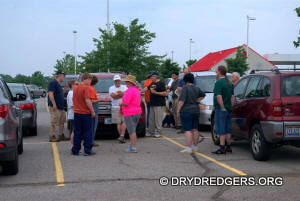
The forecast was scattered showers and we were certainly hit a few of them. But none of the showers lasted long. We have plenty of time to fossil hunt.
For May, the Dry Dredgers check out some of the road cuts which are so plentiful along scenic routes in Northern Kentucky. We met in a nearby parking lot so we could caravan to our chosen fossil sites.

The forecast was scattered showers and we were certainly hit a few of them. But
none of the showers lasted long. We have plenty of time to fossil hunt.
Stop #1: "Outcrop 3"
Our first stop exposed the middle Kope (Latonia) formation on a road cut we call Outcrop 3.
After about an hour at the first stop it started to rain. We ran for our cars and decided to move on to the second site while we waited.
Stop#2: "Outcrop 4"
When we arrived at the second site, it was still raining. A
few hard core fossil hunters stepped out and started collecting fossils in the
rain, as we can see from the first few photos below. Then it stopped raining and
everyone was looking for those easy to find brown calcite fossils in a field of
gray shale. We love the Kope Formation.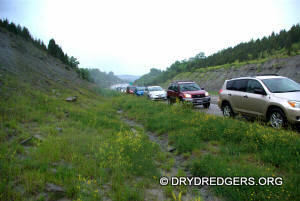
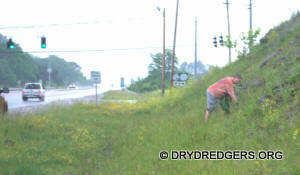

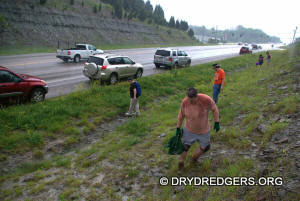
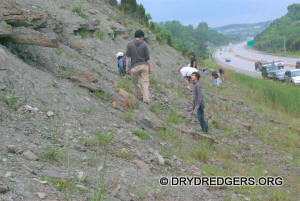
Field Trip leader Bob Bross found the first fossil at the
second site. But it was the wrong age. A Pterodactyl!!! Upon closer examination
however, we found it was made of plastic. Not the right taphonomy. Darn.
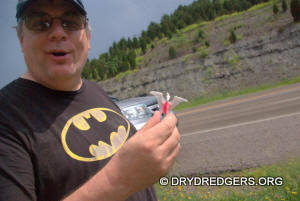
After about a half hour on site 2, it started to rain again.
Everyone went to their cars as if expecting to be lead on to the third site. As
seen below, Bob Bross went from car to car chatting with others and seemingly
unaffected by the downpour.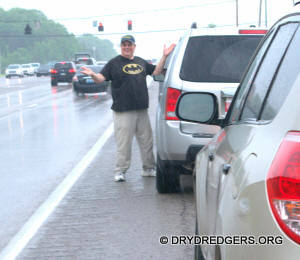
Stop #3: "Outcrop 6"
By the time we reached the third site (Outcrop 6), the rain
had stopped and everyone went to work on the fossil hunt.
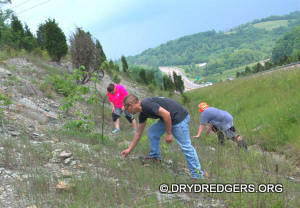
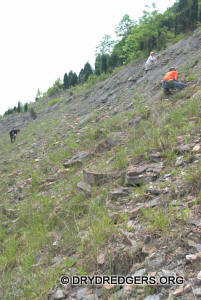
Best Find of Day - Stop #1
The best find of the day was this tiny crinoid that may be the
holdfast of
Ectenocrinus simplex.
This is actually quite an unusual find since the holdfast of this species is
seldom seen. Thanks to Jack Kallmeyer for the identification.
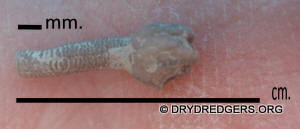
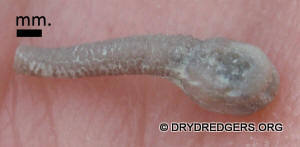
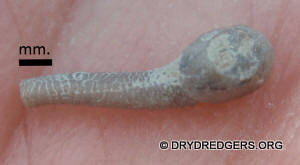
At the third road cut we visited, someone found a much larger
holdfast of Anomalocrinus sp., shown below.
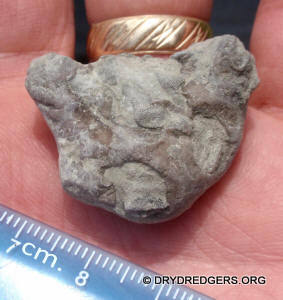
Other crinoid holdfasts were found too. Here's one of them.
I'm not sure of the type of crinoid it was from.
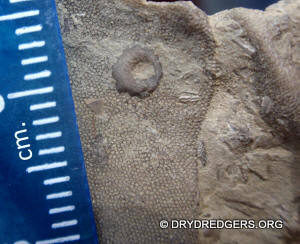
The second best find was this Flexicalymene sp.
trilobite. It will look much nicer once it is prepped out. 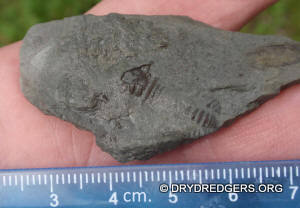
Plenty more fragments of
Flexicalymene sp. were found that
day. This first photo shows a glabella on a slab.
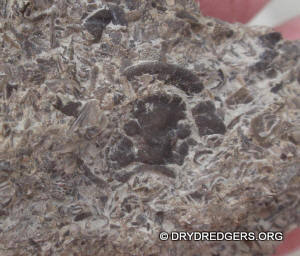
This next photo is very interesting. It's a bryozoan colony
with a damaged glabella of Flexicalymene sp. cemented
to it. 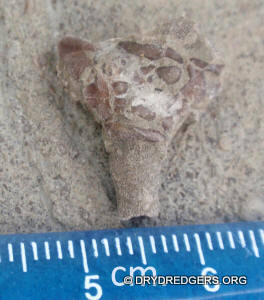
The other trilobite of which we found fragments was
Isotelus sp. This first
photo shows a couple of hypostomes (mouth plates) found by one collector.
Also found was this genal spine of Istotelus sp.
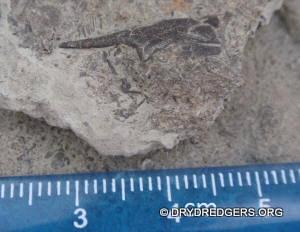
At least a couple of pygidia of Isotelus sp.
were also found (next 2 pics).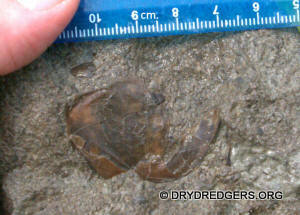
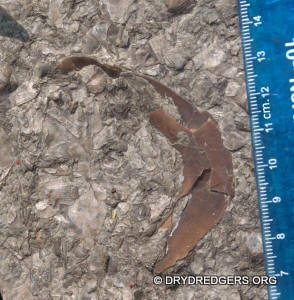
This next fossil is actually an interesting ichnofossil (trace
fossil). It might be a trace of a one or more trilobites moving about on the
bottom of the Ordovician Sea. This is likely to be the bottom side of the slab
showing in-filled troughs made by the trilobites.

Another type of trace fossil we found is filled in with
pyrite. These are more likely to be made by worms (photo below).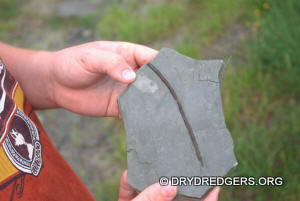
Everyone looked for crinoid cups. They should be found on this
site. Except for the Anomalocrinus calyx already
shown, no other crinoid cups were found as far as I know. We did find some interesting crinoid
stems. This first photo shows a long crinoid stem and the impression of the
continued crinoid stem that is now missing. The finder of this slab also found
loose crinoid stems that easily demonstrate where the rest of the crinoid was
originally. What's especially interesting is the trace fossil to the left of the
crinoid stem. It seems to converge with it. What's happening here??? Is
this a coincidence? Or is it the trace of something that was interacting with
the fallen crinoid. Always ask questions when you find things like this. You may
not find the answer right away, but you may help advance paleontology with the
answers you eventually find.
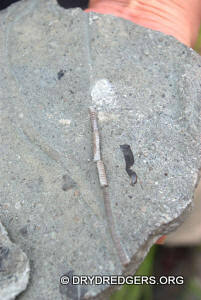
Here's a pretty picture. It's a close-up of a typical slab
from site 3. The star pattern is a crinoid stem columnal of
Cincinnaticrinus varibrachialus. The circular shapes are
columnals from the crinoid
Ectenocrinus simplex.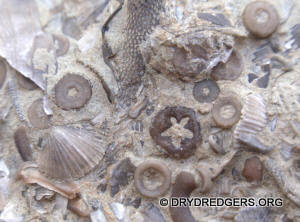
Brachiopods
On this site and the other sites we visited that day, we found
lots of the brachiopod Cincinnetina multisecta both
loose and in matrix. These first two photos show the interior of one valve. The
third photo is the outer surface of a valve.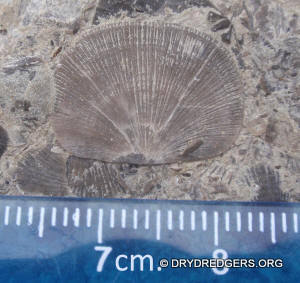
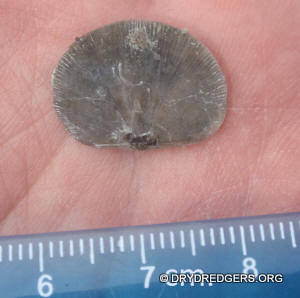
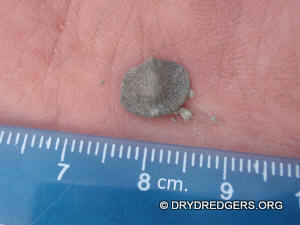
Here's an interesting brachiopod fragment. It's part of the
inarticulate brachiopod Trematis millipunctata.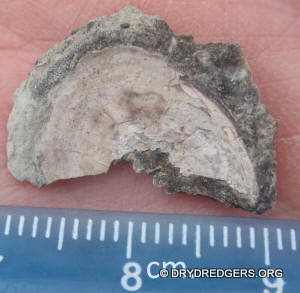
Bryozoans
In the Kope formation, we find a cone-shaped or mound-shaped
bryozoan called Prasopora simulatrix.(next 2 pics)
Look on the bottoms of these bryozoans for tiny spiny trilobites. 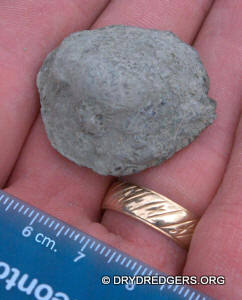
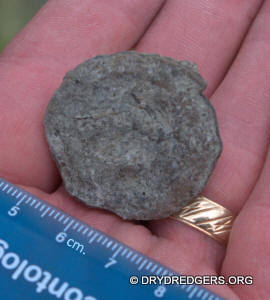
Similar bryozoans encrust clams and brachiopod shells. They
can be quite big. Here is one colony of bryozoans that has encrusted a clam.
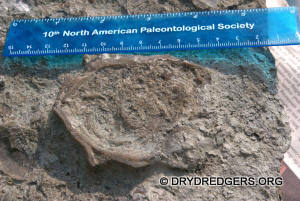
All three of these road cuts had abundant quantities of
branching bryozoans.(next 5 pics). Some of these are just sitting waiting for
someone to glue all the fragments together. This is how spectacular museum
specimens are prepared.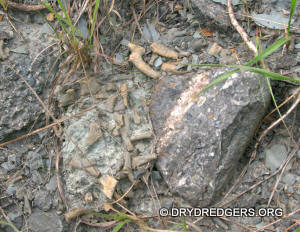
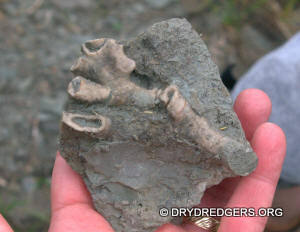
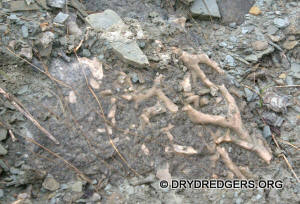
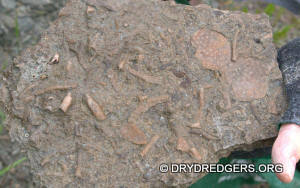
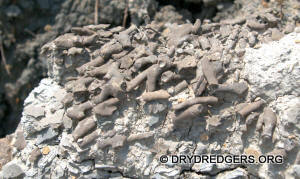
Another type of bryozoan encrusts Nautiloid Cephalopods. It's
Spatiopora sp.
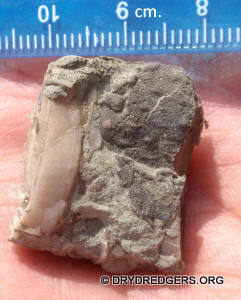
Also, massive fragments of other trepostomate bryozoans were
found.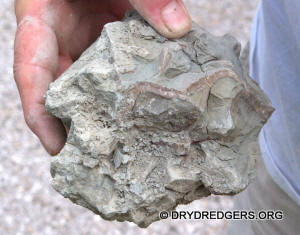
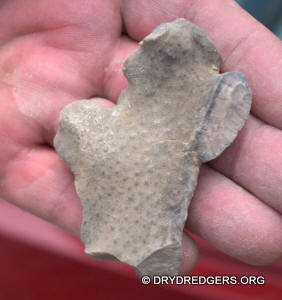
Nautiloid Cephalopods
This first
cephalopod is nice for two reasons. First it shows the siphuncle running
down the middle. Second if you flip it over (second pic) you see it is
completely encrusted with a bryozoan colony. These bryozoans helped to preserve
the cephalopod fossil.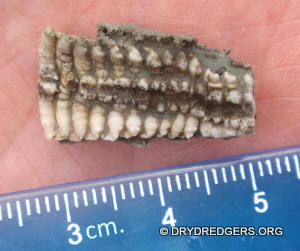
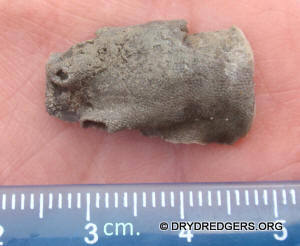
More nautiloid cephalopods found that day...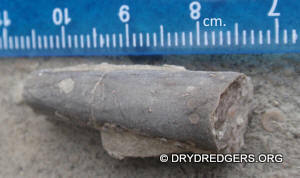
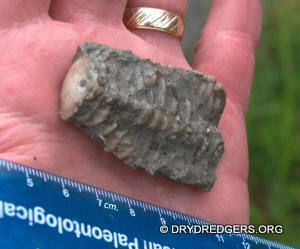
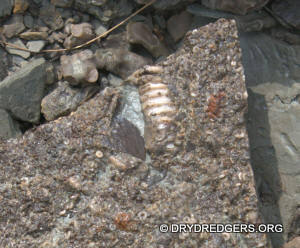
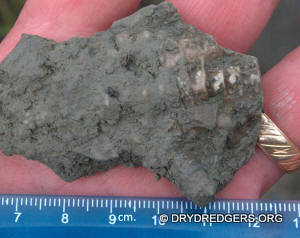
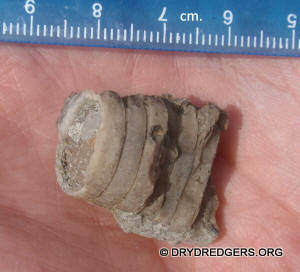
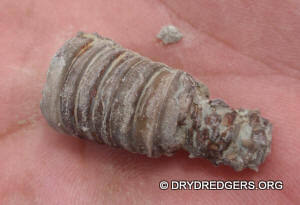
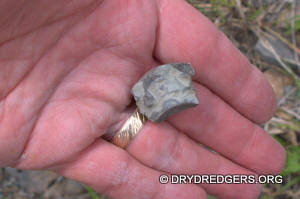
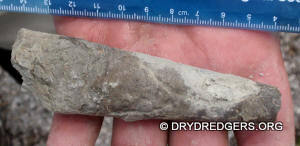
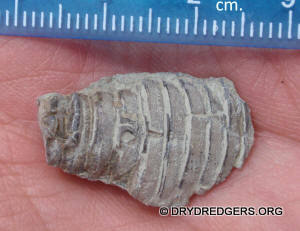
Graptolites
All three sites had black marks on shale. These are
Graptolites.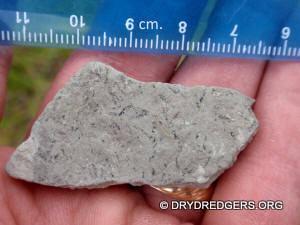
That's it for this trip. Now let's see our special June field trips with the Fossil Project's Cincinnati Mini-conference.
See previous trips down this scenic byway in northern Kentucky
April 2014
October 2010
October 2008
Back to the Field Trip Index Page
Return to Dry Dredgers Home Page
The Dry Dredgers and individual contributors reserve the
rights to all information, images, and content presented here. Permission to
reproduce in any fashion, must be requested in writing to admin@drydredgers.org.
www.drydredgers.org is designed and maintained by Bill Heimbrock.